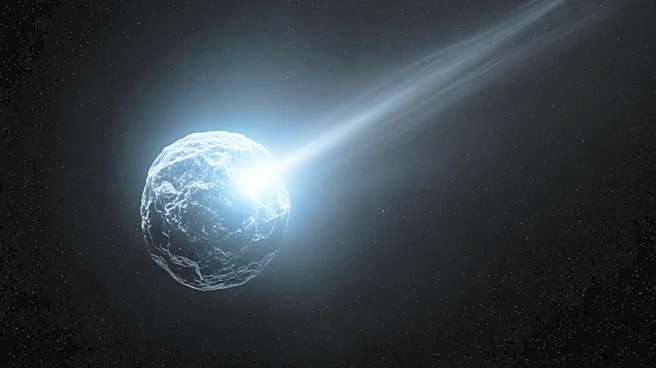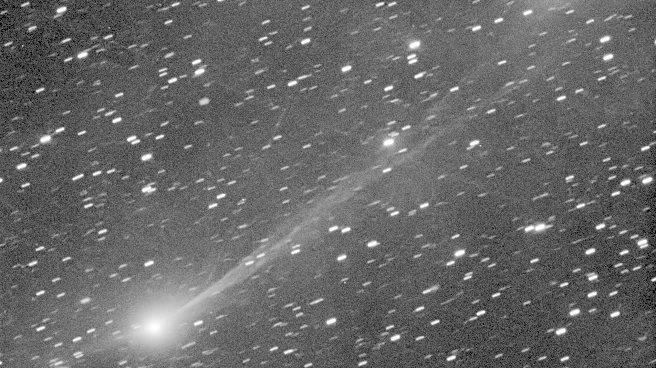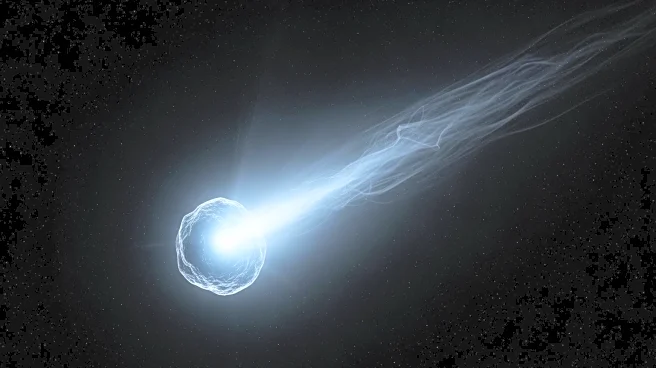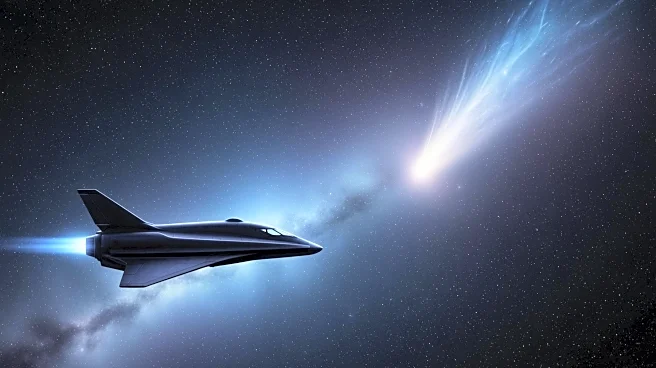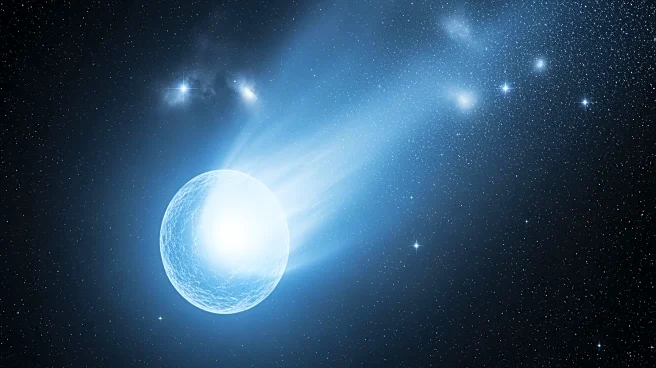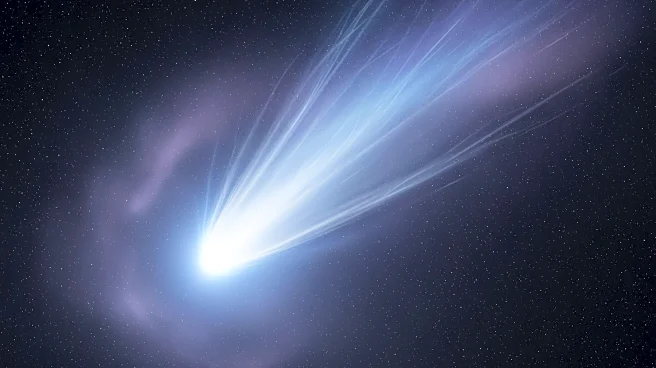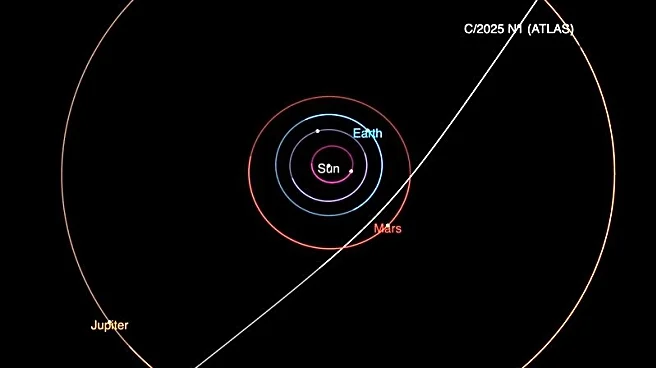What's Happening?
NASA has released a series of images capturing the interstellar comet 3I/ATLAS, which recently passed through the solar system. The comet, discovered by a NASA-funded telescope in Chile, traveled at speeds
up to 153,000 miles per hour, passing Mars and the sun before heading back into deep space. This comet is only the third known interstellar object to visit our solar system. Despite its proximity, 3I/ATLAS poses no threat to Earth, as it will pass no closer than 168 million miles from the planet. The comet's size ranges from 1,400 feet to 3.5 miles across, making it larger than Manhattan but smaller than the asteroid believed to have caused the extinction of the dinosaurs. NASA and the European Space Agency utilized various spacecraft and ground telescopes to document the comet's journey, including the James Webb Space Telescope and the Hubble Space Telescope.
Why It's Important?
The observation of 3I/ATLAS highlights the capabilities of current space technology and the importance of monitoring interstellar objects. The comet's passage through the solar system provided a unique opportunity for scientists to study an object from outside our solar system, enhancing our understanding of such phenomena. The event underscores the significance of international collaboration in space exploration, as both NASA and the European Space Agency contributed to the documentation efforts. Additionally, the comet's trajectory and characteristics have sparked discussions about the potential for interstellar objects to impact Earth, emphasizing the need for continued vigilance and technological advancement in space monitoring systems.
What's Next?
As 3I/ATLAS continues its journey out of the solar system, it will be observed by spacecraft such as NASA's Europa Clipper and the European Space Agency's Jupiter Icy Moons Explorer. These observations will provide further data on the comet's composition and behavior. The scientific community will likely continue to analyze the data collected during the comet's passage to gain insights into interstellar objects. Furthermore, the event may prompt discussions on improving detection systems for potential threats from space, ensuring that future interstellar visitors are monitored effectively.
Beyond the Headlines
The visit of 3I/ATLAS has sparked speculative theories about its nature, with some suggesting it could be an alien spacecraft. Harvard astrophysicist Avi Loeb has published papers hypothesizing that the comet might be technological and possibly hostile. However, these claims have been dismissed by other experts, who affirm that the comet behaves like a typical comet. This debate highlights the intersection of scientific inquiry and public imagination, illustrating how space phenomena can captivate and inspire diverse interpretations.
